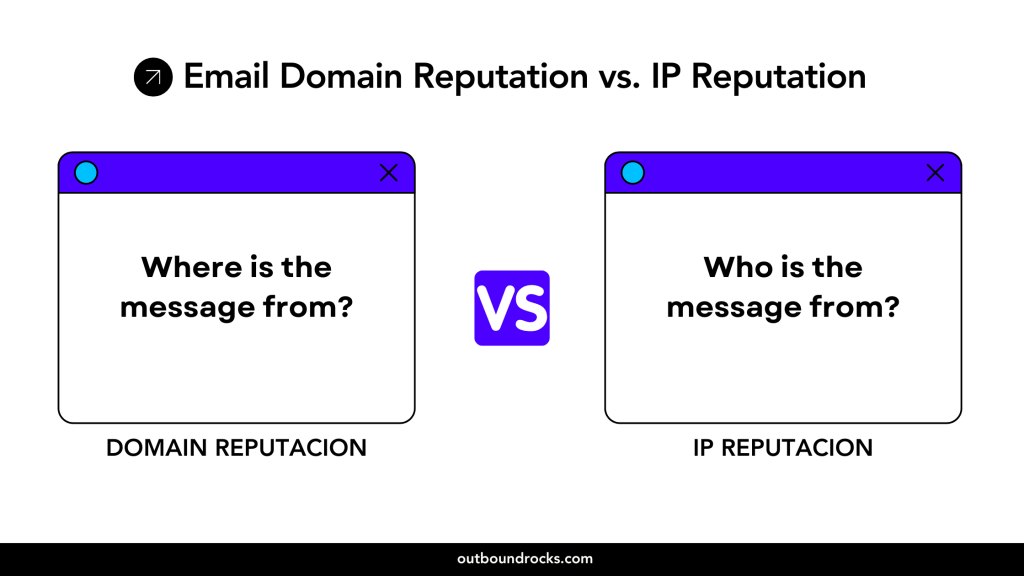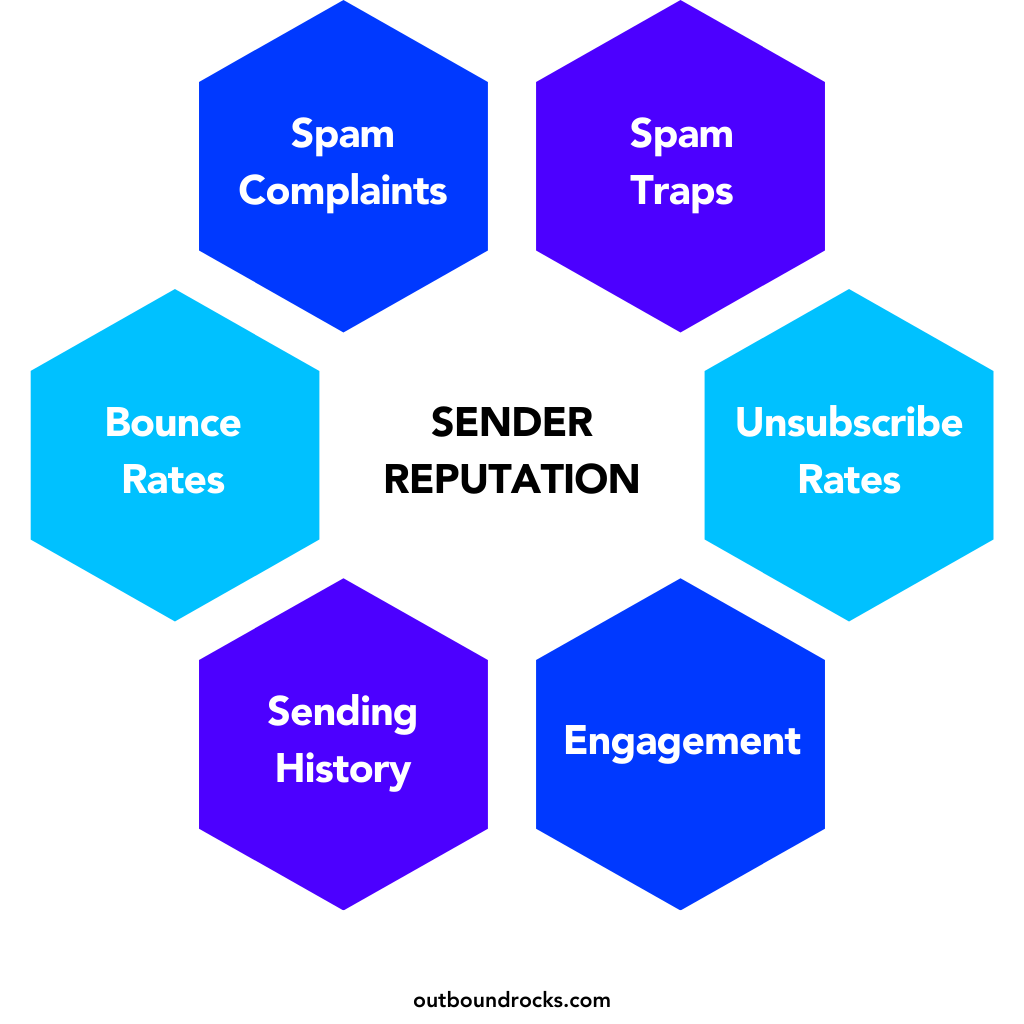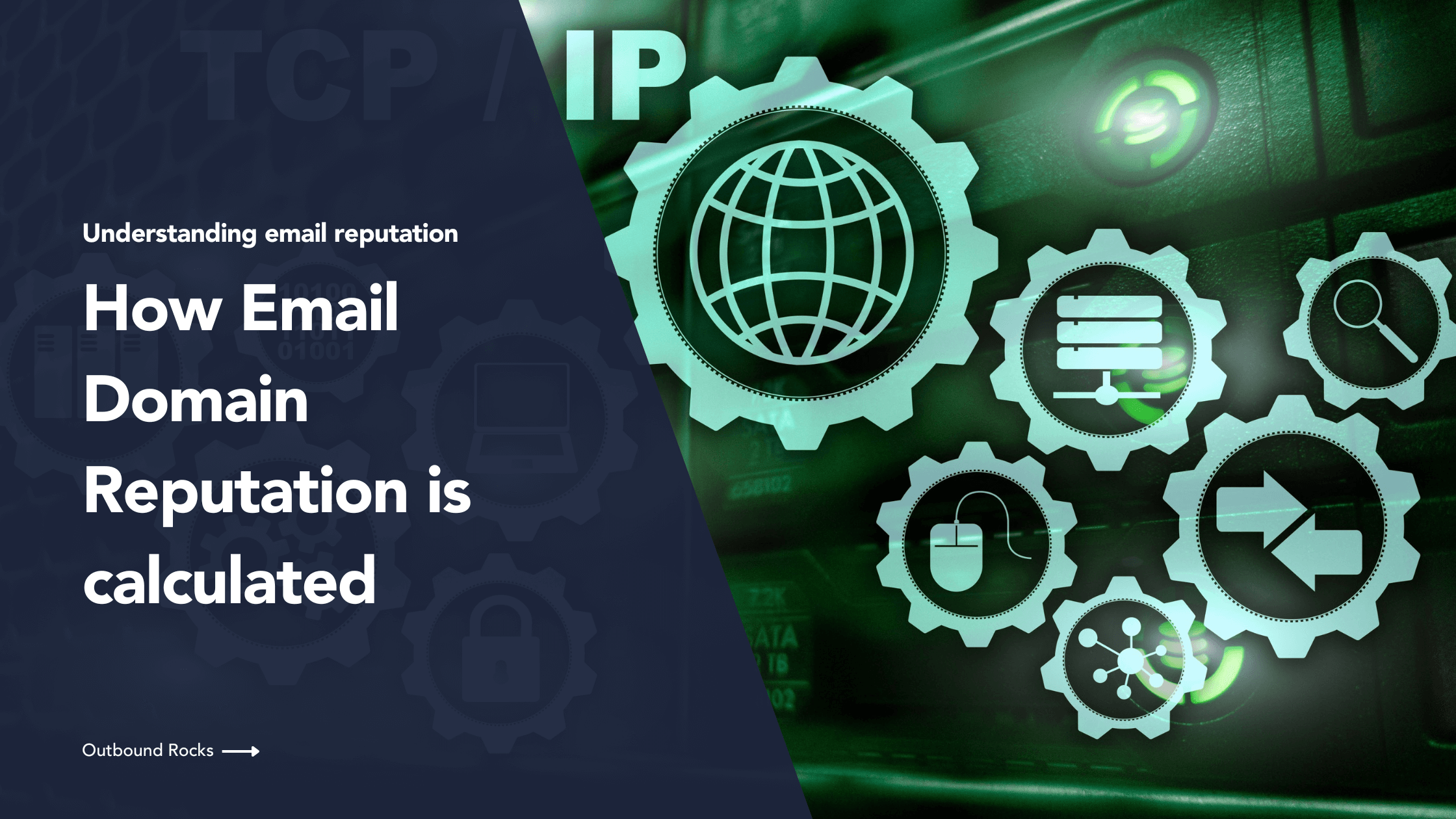Have you ever sent an important email that mysteriously never reached its destination?
The culprit could be your domain reputation, a hidden score assigned by email providers that determines whether your messages land in inboxes or the dreaded spam folder.
In this article, we’ll break down the key concepts of domain reputation, explore how this score works, and explain how it’s calculated.
Read on to gain the power to optimize your email sending practices and ensure that your messages consistently reach their intended audience.
Email Domain Reputation vs. IP Reputation
There’s a common misconception about email reputation – domain reputation and IP reputation. While both are important, they’re different concepts.
Here’s how they differ:
IP address
It’s a unique identifier assigned to your computer or server. When you send an email, email providers (like Gmail) look at the IP address associated with your sending domain to identify the origin of the email.
This IP address also has its own reputation score based on past sending behavior.
Domain Name
Your domain name, on the other hand, is your online address (for example, [invalid URL removed]). It serves as the identity of your email server and is used to look up the corresponding IP address.
Here’s the key difference: your domain reputation is directly tied to your domain name.
While we’ll focus primarily on domain reputation in this article because of its lasting impact, maintaining a good IP reputation is still recommended because it can contribute to your overall sender score.

How does the email domain reputation function?
Your reputation is determined by several factors, including:
- Engagement metrics: This includes factors such as open rates, click-through rates, reply rates, and forward rates. High engagement means that your emails are relevant and interesting to recipients, which improves your reputation.
- Complaint rates: If recipients frequently mark your emails as spam, this will significantly damage your reputation.
- Bounce rates: Hard bounces can also affect your score. According to a Brevo report, if your email bounce rate is over 5%, it should set off alarm bells and you should look into cleaning up your list or determining why your emails are bouncing.
- Spam traps: Spam traps are email addresses specifically designed to catch spammers. Sending email to these addresses is a major red flag and can severely damage your reputation.

It’s important to remember that ESPs likely weigh these factors differently.
While the exact formula remains a mystery, understanding these key metrics allows you to optimize your email marketing practices to encourage positive recipient behavior and build a strong domain reputation.
How is email domain reputation calculated?
Calculating your domain reputation is not a simple process. Each email service provider (ESP) maintains its own unique scoring system, making domain reputation a complex and multifaceted process.
Here’s how it works:
a) Tracking user interaction
ESPs meticulously track how recipients interact with your emails. This includes everything from open rates and click-through rates to spam complaints and deletions.
Positive engagement (opens, clicks) signals a good reputation, while negative interactions (complaints, deletions) drag it down.
b) Complex algorithms
Based on this collected data, ESPs use sophisticated algorithms to assign a “score” to your domain. This score reflects the level of trust they have in your email.
A high score means your emails are more likely to reach inboxes, while a low score increases the risk of spam filtering.
c) Unique scores per recipient
It’s important to understand that you don’t have a universal domain reputation. Each ESP develops its own score based on specific interactions with its users.
For example, Gmail users may engage with your content more than Yahoo users, resulting in slightly different scores for your domain.
3 strategies for successful email domain reputation
1. Prioritize permission-based marketing
Only send emails to those who have specifically opted in. Purchased email lists are a recipe for disaster, resulting in high bounce rates and spam complaints.
Focus on building a real subscriber base through valuable content and clear opt-in forms.
2. Create engaging and relevant content
Your email content is at the heart of your reputation. Aim for emails that provide value to your subscribers. Include engaging subject lines, personalize your messages, and avoid misleading content or excessive images.
By focusing on quality content that resonates with your audience, you’ll encourage positive engagement and build your reputation.
3. Monitor and maintain consistently
Monitor your domain’s reputation score regularly using available tools such Outbound Rocks. Analyze engagement metrics to identify areas for improvement.
Maintain a consistent sending schedule that aligns with your audience’s expectations. By being proactive and responsive to potential issues, you can address them before they negatively impact your reputation.
Want to learn more? Our blog post, “Best Strategies for Successful Email Reputation Systems,” will provide a comprehensive roadmap for optimizing your email sending practices and achieving inbox dominance.
Conclusions
Ready to take your outbound campaigns to the next level? Try our free demo today and discover how Outbound Rocks can help you optimize your sales funnel and connect with your ideal prospects.
